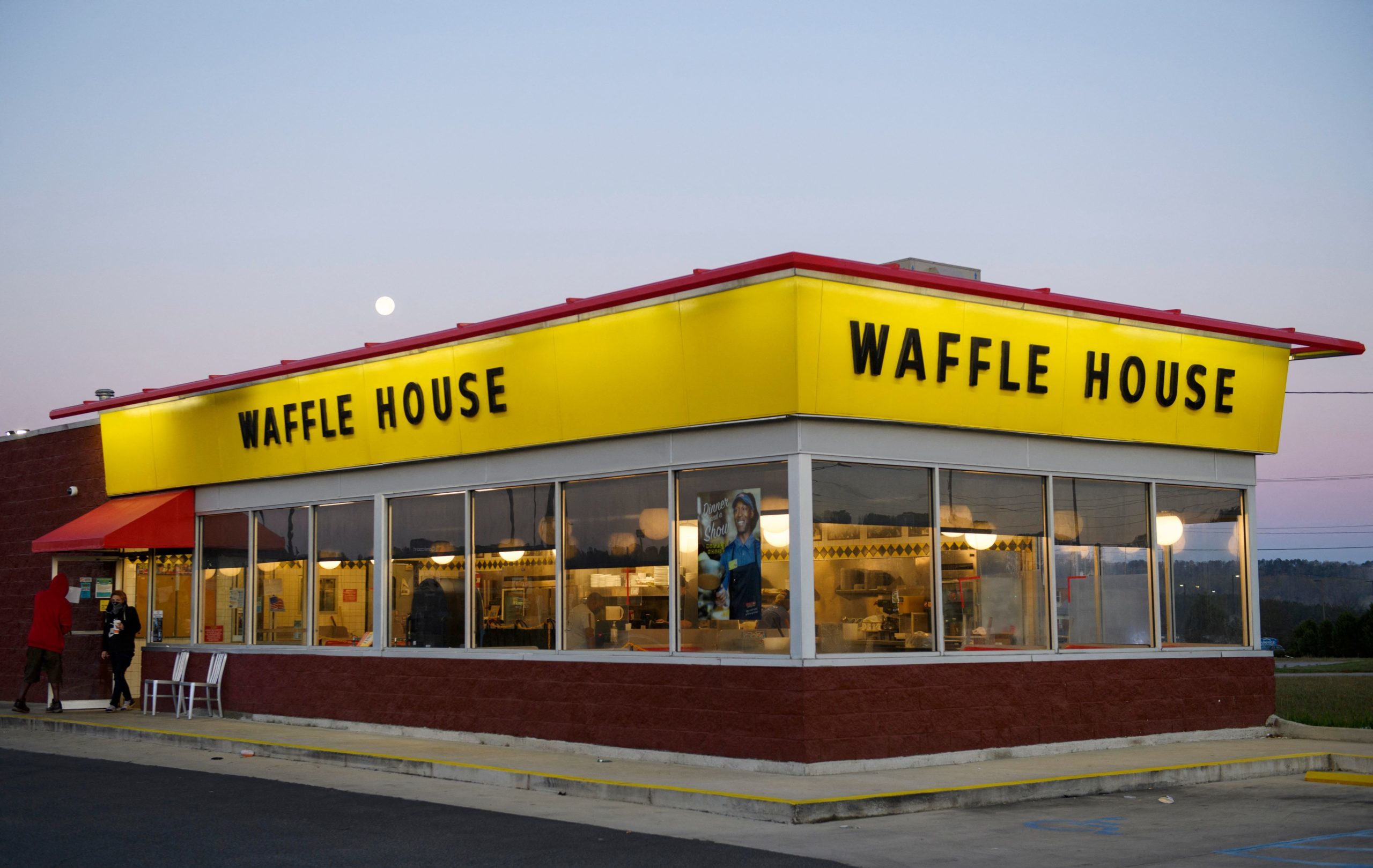The Gospel According to Waffle House
After Hurricane Ian, Waffle House was the first to open back up.

A fistful of black letters flicker atop the pale yellow background. You may find better food elsewhere, but you won’t find better food for the money. They have a menu, though I have never needed it. Two eggs, over medium; bacon; hash browns scattered, smothered, and covered; one waffle with butter and maple syrup; and a cup of black coffee. That has been my standing order for decades and there’s been no need to get any more ambitious than that.
When you sit down at the table or the bar, you will likely be greeted by someone who calls you “honey” or “sugar” or “baby” or sometimes “boss.” But you will be greeted, and usually with a smile, by someone who knows what it means to work long and hard for very little. Some of them are working their way through college. Some of them are single parents trying to pay the rent and keep the lights on at home. Some are ex-cons trying to hold down a job by wiping tables and desperately trying to believe the rumors of second chances.
Comments